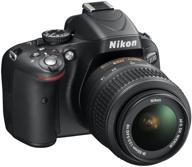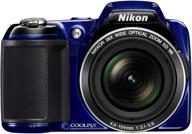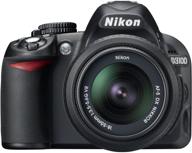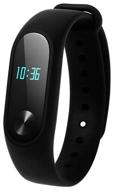
Review on Black Canon EOS M6 Mark II Mirrorless Camera (Body) - Ideal for Vlogging with APS-C CMOS Sensor, Dual Pixel CMOS AF, 4K Video, Wi-Fi, and Bluetooth Connectivity by Taurus Monsalve

Good update with EOS-M3
I've been using the camera for about a month now. Before that I used M3 and before that Rebel XTi. Sample shots were taken with the 11-22 IS zoom lens, which is my favorite lens in the range. One thing that frustrated me, like most M-series users, was Canon's practice of restricting the features of these great cameras. It looks like they listen to their users. For hobbyist or amateur use, this camera is more than enough for you. After the M3, I was shocked and amazed at the speed of continuous shooting and the lack of noise when increasing the ISO. I've been using bracketing for years because that's what I was taught to do in the cinema days. I had to search a bit to find it in the menus, but now I have a shortcut in the user menu. Since I used bracketing on the M3 to create HDR in Lightroom, I assumed the HDR menu setting would do the same. It does auto bracketing, but also generates HDR in-camera. I would love to be able to post edit but with "natural" setting and +/- 1 stop or auto setting it seems fine. Some of the more artistic HDR settings look cartoonish to me. I did both HDR and bracketing and just pick the one I like best, it could be any of the 4 shots. I didn't do much with the other in-camera effect modes, preferring to get a clean image and post-processing. In fact, I usually just set the mode dial to M and leave it there. Otherwise, what's the point? The poorly done self-portrait example (more on that below) was taken in P mode for reference only. I don't have a hotshoe eyepiece because my shooting style is screen-adapted and relies on autofocus. I can still read the screen in bright sunlight, although I rely on the histogram and measure more than with the viewfinder. It gets a little confusing, but I've gotten into the habit of skimming the text and using the info button as I'm composing. What hasn't improved is the communication between the app and the camera. It's very confusing to set up. Some features (particularly geotagging) require Bluetooth, while others (remote shooting) require WiFi. Why can't the camera connect to iOS app with both? Or just send the data as needed? The connection between my Mac and the camera is Wi-Fi only, although the connection is via a USB-C cable to transfer photos. Again, you need to play around with the settings more. And the Wi-Fi radio is so weak I couldn't move more than a few feet before it cut out. This photo of me standing on a ledge is basically just randomly pressing the shutter button on the app and guessing. I think I tested in a high HF environment (note the antenna mount in the example image), but I've confirmed that it's pretty bad in suburban environments too. Probably not a common use case, but still. What excited me the most about this case was the plan to eventually use it on a homemade drone. It's a bit heavier than I'd like, but otherwise Canon seems to have gotten this part right for a change. This includes Canon's standard three-pin remote shutter release. I can use a simple relay on my drone to trigger the shutter. The HDMI output can display the same information as the rear screen (and changes with the information button). And the hot shoe needs to be able to provide feedback to the drone for time stamping in the log. Excellent work. It remains to be seen how the WiFi remote control can be hacked, but even if I have to use P mode I still have a lot of control. The elephant in the room, of course, is will Canon continue to support the EOS-M line? I think they probably will, if only because they have to stay in the category of PEN and Micro 4/3 format compact mirrorless cameras built by Olympus. The lens selection isn't the greatest, but it fits most of my usual shoots (and there's always an adapter). I find this format perfect for the position of the classic rangefinder in the catalogue. A funny note. Many people think that this is a small camera. I compared the size to my old AE-1 and Nikkormat film cameras. They used to be considered fairly large cameras and the M6mkII compares well with them. Of course, when you added a film burning motor and more capacity in the back (if available) film cameras got pretty big, but what's the point these days? Ergonomically, it might be better to have a bigger camera so you don't accidentally press the buttons (which I do with the M6), but then you need bigger bags and more weight to carry around.
- Handsfree
- Appearance
New products
Top products in 📷 Digital Cameras

Nikon D5100 Digital SLR Camera with 18-55mm VR Lens - High Resolution 16.2MP

172 Review

Nikon D3100 DSLR Camera Body (Kit Box) - No Lens Included, International Version with No Warranty

298 Review

Nikon COOLPIX L810 Digital Camera: 16.1MP, 26x Zoom, NIKKOR ED Glass Lens, 3-inch LCD (Blue)

95 Review

Nikon D3100 DSLR Camera with Auto Focus-S Nikkor Zoom Lens (Discontinued by Manufacturer)

109 Review






